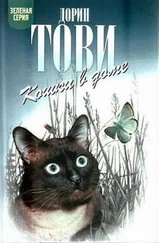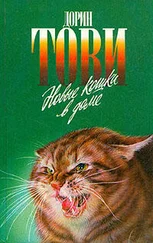How right we were we learned next morning when a passing ranger, stopping for a chat while we were cooking breakfast, asked if we knew we were on La Grande Traverse.
That’s it, right there in front of you,’ he said, indicating the narrow track that ran along the river bank a few feet from our camper door. We stared, scarcely able to believe it. The most famous of all the old Hudson Bay Company’s trade routes. ‘Shades of the Boy’s Own Paper ’, said Charles. To think we’re actually on it!’
I was raised on The Magnet myself, but I knew just how he was feeling. This way, in their time, had come explorers, fur-traders, prospectors... on foot or with plodding pack-horse train along this very path. Up-river, through the Athabasca Pass in the mountains, by canoe down the Columbia River to the coast. A journey that took weeks, sometimes months, to accomplish. Some of those travellers must have camped on this very spot.
That, and the fact that the warden told us we were within twenty miles of wolf country... he’d arrange for us to go up 59
The Coming Of Saska_INSIDES.indd59 59
13/06/2007 17:36:02
The Coming of Saska there with a naturalist if we liked... sold Wapiti to us. We camped there for a week. We saw several bears and we heard the wolves. The reason we didn’t see them was that they are afraid of human beings.
It is a fact. Those hair-raising adventure stories in which wolves attack the hero... being held off by his waving a firebrand at them or chasing a racing sleigh from which, with his last remaining shot, he valiantly downs the leader...
have no foundation whatever. Wolves, like dogs, are basically friendly towards humans... or would be, given the chance.
Years ago they say, back in the days before the settlers came, it was a common occurrence to meet up with a wolf.
A traveller might come across one lying asleep in the sun or under a bush... it was the wolf which leapt to its feet in alarm and then, seeing the intruder was a man, would raise its tail and pad placidly away. The Indians regarded the wolves as their friends. There were even individuals who claimed to understand their language and to be able to communicate with them, the wolves warning them of approaching danger.
Fantastic though it may sound there is now confirmation of this. Parley Mowat in his book Never Cry Wolf , for instance, records several instances of an Eskimo being able to interpret what wolves were saying. In one case a dog wolf told his mate that the hunting was bad and he wouldn’t be returning till the middle of the day (in fact, says Parley Mowat, the wolf came back at 12.17). On another occasion the Eskimo said a distant wolf was telling one close at hand that travellers coming from the north-west were passing through his territory. In due course, the Eskimo having gone out to meet them on the strength of the wolf ’s message, the travellers came into camp. The wolf who had received the 60
The Coming Of Saska_INSIDES.indd60 60
13/06/2007 17:36:03
Doreen Tovey
message, and who normally went hunting to the north-west, had meanwhile gone in the opposite direction, obviously to avoid them.
Of the wolf ’s compatibility with man we’d seen evidence on our previous visit. Driving down into Montana, on our way to Glacier National Park, we’d stopped off in a hamlet called St. Mary’s to visit a Blackfoot Indian wood-carver.
Every one of his carvings was a masterpiece. A group of rearing horses, a leaping cougar, running deer... What really took my eye, however, was a series of long relief panels hanging round the walls. Scenes from old Blackfoot life, he told us. Tales he’d been told as a boy by his grandmother.
One of them raised my eyebrows a bit. Opinion now is that the Indians were wrongly treated – that it was the white men who were the villains of the piece in frontier days – and in principle this is right. In the panel showing Blackfoot warriors behind a lookout rock on a hillside however, watching a stagecoach rolling in a cloud of dust across the plain below...
one of the Indians pointing down at it, another excitedly beckoning others, all of them stripped to breech clouts and armed to their Indian teeth... it hardly looked as if they planned to go down bearing a banner with ‘Welcome’ on it: they looked more like practised swatters watching the progress of a fly. I would like to have asked how the episode ended, but I thought it might be indiscreet. We are talking about wolves, anyway. There was this other panel on the wall...
It depicted Blackfoot hunters returning from the chase
– small boys coming out to escort them, two of the hunters carrying a deer on a pole, and what appeared to be a dog trotting proudly alongside. ‘A husky?’ I asked, noticing that the dog was thick-set and had a ruff. ‘A wolf,’ said the carver matter-of-factly.
61
The Coming Of Saska_INSIDES.indd61 61
13/06/2007 17:36:03
The Coming of Saska I knew they’d crossed dogs with wolves, of course. It was an old Indian and Eskimo custom to tether an in-season bitch away from the camp at night in the hope that a dog-wolf would come and mate with her. It was thought to infuse strength and stamina into her pups; wolf crosses made some of the best sledge dogs. But pure wolf? Oh yes, said the Blackfoot carver. The hunters used to bring the cubs home to the women, who raised them along with the children.
They grew up perfectly tame and were very much prized as hunting dogs. Indians had never been afraid of wolves. It was the white men who were scared.
62
The Coming Of Saska_INSIDES.indd62 62
13/06/2007 17:36:03
Seven
SETTLERS FROM EASTERN EUROPE started it. Coming from closely populated countries where the wolves, unable to find wild prey, habitually raided village sheepfolds in winter...
where glimpses of their dark shapes slipping through the woods and folklore about their carrying off children had terrified the peasants for ages... the immigrants took their fears and superstitions to North America with them. When they saw a wolf their policy was to kill it. English settlers, with no experience of wolves themselves, accepted the beliefs of their European neighbours. There were good inducements for killing wolves in any case. The Government paid a bounty on them, and prime wolfskins were valuable.
They were slaughtered by shooting, by trapping, by poison... In the old days, they say, when an Indian killed a buffalo or deer for food, he would often be surrounded by a circle of friendly wolves, sitting at a respectful distance, waiting for him to take what he wanted of the meat so they 63
The Coming Of Saska_INSIDES.indd63 63
13/06/2007 17:36:03
The Coming of Saska could move in and feed on the remnants. All the bounty-hunters needed to do with wolves like those, for a start, was to put strychnine into the carcass.
One observer, writing in the 1860s, tells of seeing ten wolves waiting in this way while their meat was poisoned for them. It was the running season, he said – the time for courting and choosing mates – and the group contained several young bitches, each with a following of dog wolves who frolicked and fawned around her. They waited as confidently as dogs, used to doing this from cubhood.
Then the poisoner moved away and they frolicked in to their deaths.
Even while wolf-phobia was at its height, however, there were some people who tried to spread the truth. The man travelling through Western Nebraska, for instance, who recorded that while sleeping out in the open one night he’d been awakened by something being drawn across his chest.
Opening his eyes, he found a wolf sitting by him, pawing at him as a dog might do to attract its owner’s attention. He was under no illusion that the wolf was trying to be friendly.
Читать дальше









![Дорин Тови - Кошачьи хлопоты [сборник]](/books/412213/dorin-tovi-koshachi-hlopoty-sbornik-thumb.webp)


